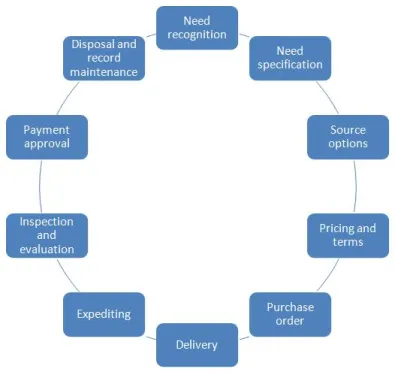The Importance of an Efficient Document Procurement Process in Business Operations
- donnariekepro
- Jul 8, 2024
- 2 min read
In today's fast-paced business environment, efficiency and cost-effectiveness are crucial for sustaining competitive advantage. One area often overlooked but essential to business operations is the document procurement process. This blog explores why optimizing this process is pivotal for organizational success.
Importance of Streamlined Document Procurement
1. Cost Savings and Financial Efficiency
An efficient document procurement process minimizes unnecessary spending by ensuring that all purchases are authorized, tracked, and managed effectively. This not only reduces procurement costs but also prevents budget overruns and improves financial forecasting accuracy.
2. Time Efficiency and Productivity
Streamlining document procurement saves valuable time for employees involved in the process. Automation and standardized procedures reduce manual tasks such as searching for suppliers, negotiating contracts, and processing orders. Employees can focus on strategic activities that drive business growth and innovation.
3. Compliance and Risk Management
A well-organized procurement process ensures compliance with regulatory requirements and internal policies. By establishing clear approval workflows, businesses mitigate the risk of non-compliance penalties and legal issues. Moreover, centralized procurement data enhances transparency and accountability across the organization.
4. Enhanced Supplier Relationships
Efficient procurement practices strengthen relationships with suppliers. Timely payments and consistent communication foster trust and reliability, leading to better negotiation terms, discounts, and improved service levels. This collaboration can also drive innovation and product quality improvements.
5. Data-Driven Decision Making
An optimized document procurement process provides valuable insights through data analytics. Access to real-time procurement data enables informed decision-making, such as identifying cost-saving opportunities, supplier performance evaluations, and market trend analysis. These insights empower businesses to adapt swiftly to market changes and maintain competitiveness.
Implementing an Efficient Document Procurement Process
1. Automation and Technology Integration
Investing in procurement software and automation tools streamlines workflows, reduces human error, and enhances process efficiency. These tools facilitate electronic document management, digital signatures, and seamless integration with ERP systems for end-to-end procurement visibility.
2. Standardized Procedures and Training
Establishing standardized procurement procedures ensures consistency and compliance. Training employees on these processes enhances their proficiency and ensures adherence to best practices, reducing operational bottlenecks and accelerating procurement cycles.
3. Continuous Improvement and Adaptability
Regularly review and refine procurement processes to align with evolving business needs and industry trends. Embrace feedback from stakeholders, leverage benchmarking data, and implement agile methodologies to foster continuous improvement and operational excellence.
Conclusion
In conclusion, an efficient document procurement process is not merely a cost-saving measure but a strategic imperative for modern businesses. By optimizing procurement workflows, organizations enhance financial efficiency, mitigate risks, foster supplier relationships, and empower data-driven decision-making. Embracing automation, standardization, and continuous improvement ensures that businesses remain agile, competitive, and resilient in dynamic market environments. SITES WE SUPPORT
SOCIAL LINKS




Comments